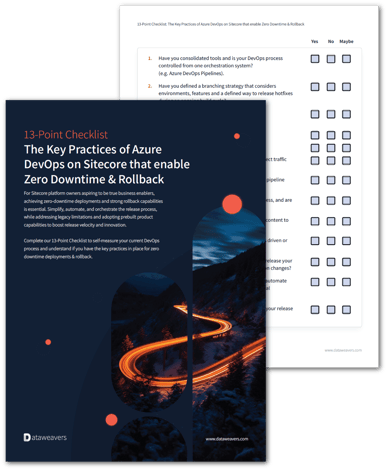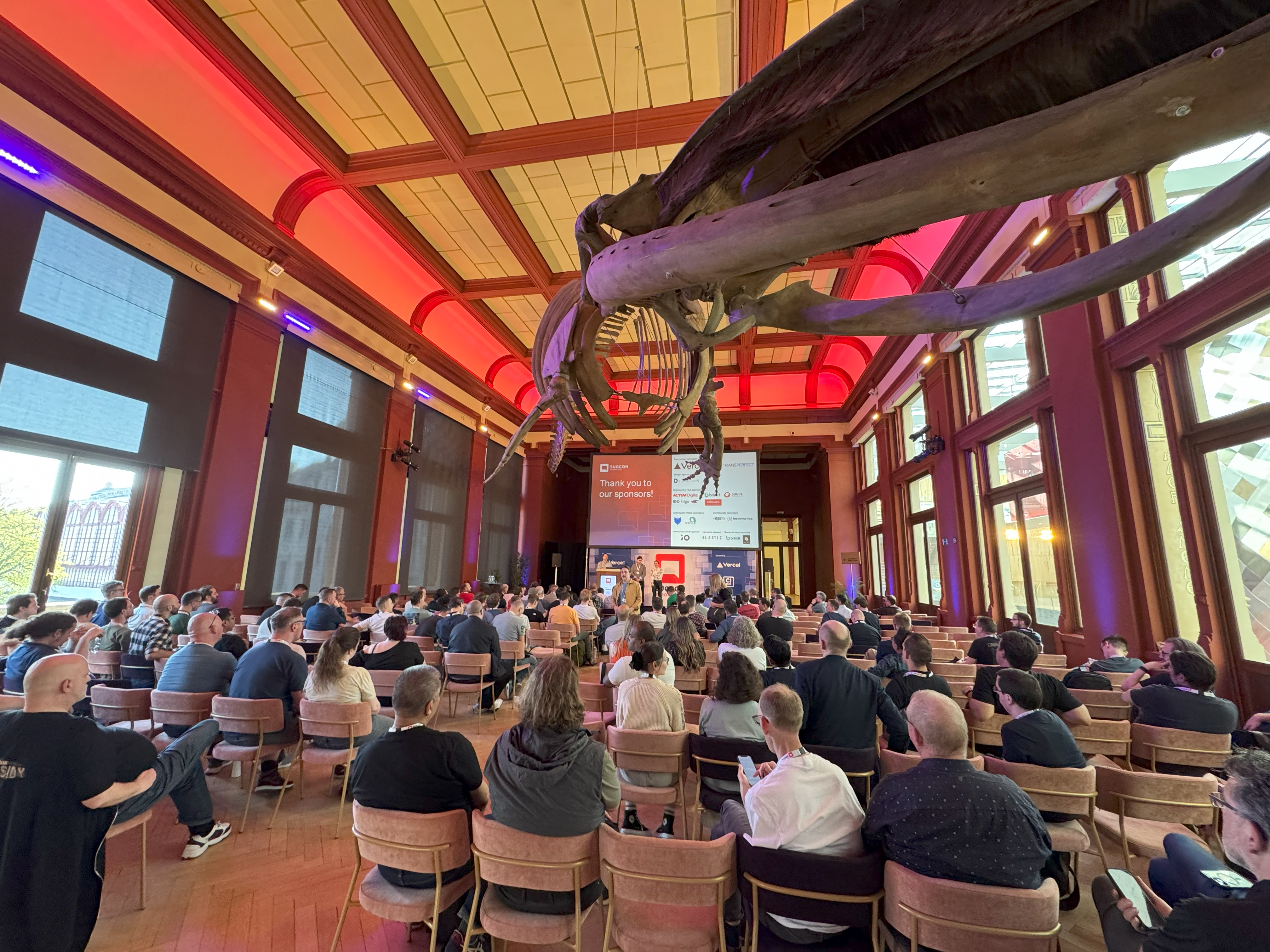Full stack releases of a Sitecore application and infrastructure environment can be compared to launching a ship. Just like a ship needs to have all its parts and systems in place and working seamlessly together before it sets sail, a Sitecore environment also needs all its components (front-end, back-end, database, etc.) to be in sync and fully integrated before it can be released. And just as a ship needs to be launched smoothly and without any hiccups, a Sitecore release needs to be done seamlessly and without any errors, to ensure smooth sailing for the end-users.
Sitecore platform owners want to be seen as business enablers. This means ensuring flawless availability from an end-to-end optimized Sitecore ecosystem and operating a secure and trusted platform for growth.
But, many Sitecore Platform owners and their digital teams find it hard to get ahead of the platform because they have unreliable infrastructure and reckless releases that increase tech debt. This causes digital teams to focus on maintaining the infrastructure rather than building valuable digital experiences.
To overcome these challenges, digital teams must have the ability to make decisions with velocity. We first talked about proven CI/CD pipelines in the Sitecore environment, the second requirement is the ability to do full stack releases – which is what we’re talking about today.
Full stack releases of Sitecore Environment
Executing a full stack release refers to the deployment of changes to all layers of a Sitecore application and infrastructure environment, including the database, application code, and infrastructure configuration. This approach ensures that changes are implemented in a coordinated and synchronized way, avoiding the potential for conflicts or inconsistencies between different components.
Upgrading to the latest version of Sitecore XP, coupled with a comprehensive full tech stack and concurrent server and infrastructure upgrades, presents a transformative leap forward for organizations in the realm of digital experience management. The integration of cutting-edge features in Sitecore XP enhances content management workflows, offering a more intuitive and streamlined experience for content creators and marketers. The effect of a full tech stack upgrade introduces advanced personalization capabilities, powered by machine learning algorithms, enabling organizations to deliver hyper-targeted content tailored to individual user preferences and behaviors.
Simultaneously, server and infrastructure upgrades significantly contribute to the scalability and reliability of the platform. With enhanced server capabilities, organizations can efficiently handle increased user traffic and deliver seamless digital experiences even during peak demand periods. Infrastructure upgrades ensure a robust and secure foundation, safeguarding sensitive data and fortifying the overall resilience of the digital ecosystem.
Why a holistic approach is necessary for developers
The holistic upgrade approach extends benefits to developers as well, providing a more responsive and agile development environment. Optimized performance not only accelerates development cycles but also supports the creation of innovative digital solutions that can adapt to evolving market demands.
The combined Sitecore XP, full tech stack, server, and infrastructure upgrade offers a comprehensive solution, empowering organizations to stay at the forefront of digital experience management. This strategic investment not only future-proofs their digital capabilities but also enhances user experiences and ensures a scalable, secure, and high-performance foundation for sustained digital success.
Reasons why you can't do full stack releases
Like coordinating a parallel release process, performing a full stack review and update requires diligent planning and considerations. Such a multifaceted upgrade comes with inherent risks and challenges. Data migration during the upgrade process poses potential complexities, requiring meticulous planning to avoid disruptions and data integrity issues. Compatibility concerns may arise, particularly if existing integrations or customizations are not immediately compatible with the new versions.
Additionally, the server and infrastructure upgrade may demand significant time and resources, impacting day-to-day operations. Comprehensive testing is crucial to identify and address any unforeseen issues that may arise post-upgrade. Furthermore, the need for employee training to adapt to new features and workflows introduces a transitional challenge.
Despite these challenges, a well-executed upgrade strategy, including thorough testing, training, and a robust migration plan, can mitigate risks and unlock the full potential of Sitecore XP and the upgraded tech stack, delivering a more resilient, scalable, and feature-rich digital experience platform.
If a full stack release causes issues or downtime, rolling back to a previous version can be challenging, particularly if changes were made across multiple components of the environment. This can lead to prolonged downtime and frustration for digital teams and end-users. Check out our article on zero downtime and rollback to understand in more detail how to overcome this challenge.
How Dataweavers gives full stack deployment capability
Dataweavers teams regularly evaluate front-end, back-end and integration layers to ensure that they are modern, up-to-date, and reflect the latest in secure measures to maintain data integrity for Sitecore implementation.
To accomplish this, we consistently look at our PaaS architecture; understand the right Azure webapp services that power SQL Servers, Content Publishing services, and behavioral tracking collection services. We ensure automation scripts, job calls, and other operational systems.
When performing a Sitecore full-stack deployment through customized Azure DevOps pipelines and other Azure Platform as a Service (PaaS) offerings, Dataweavers utilizes a systematic and automated approach to building, testing, and deploying applications. Your developers can initiate the process by committing code changes to a Git repository, which triggers the Azure DevOps Continuous Integration (CI) pipeline. For various WebOps applications, the CI pipeline may utilize tools like MSBuild and NuGet to compile the code, run unit tests, and produce deployable artifacts. These artifacts are stored in Azure Artifacts, providing a versioned repository for package management.
The Continuous Deployment (CD) pipeline in Azure DevOps takes over for staging and production deployment. In the staging environment, the CD pipeline may deploy the backend, built on ASP.NET, to Azure App Service, our Sitecore PaaS offering simplifies the management of web applications. For the frontend, frameworks like Angular or NextJS can be deployed to Azure Static Web Apps, providing a serverless and globally distributed content delivery.
Azure DevOps Release Pipelines facilitate the definition of deployment stages, allowing for integration of testing and approval processes. Azure Application Insights plays a crucial role in monitoring the application, capturing telemetry data for performance analysis and issue detection. Azure Monitor and Azure Log Analytics enhance observability by aggregating logs and metrics.
Upon successful staging tests, User Acceptance Testing (UAT), and necessary approvals, the CD pipeline is triggered for production deployment. Azure Resource Manager (ARM) templates are employed for Infrastructure as Code (IaC), defining and provisioning Azure resources consistently. This end-to-end pipeline, orchestrated by Azure DevOps and leveraging various Azure PaaS services, ensures an automated, efficient, and dependable deployment process for full-stack applications without relying on Docker containers.
Find out more dataweavers.com/cxt/performance
How we can help you get started
Check out our 13 Key Practice Checklist for Sitecore, to self-measure where you land in your current DevOps process:







